Emerging Chatbot Solutions for Businesses in 2025
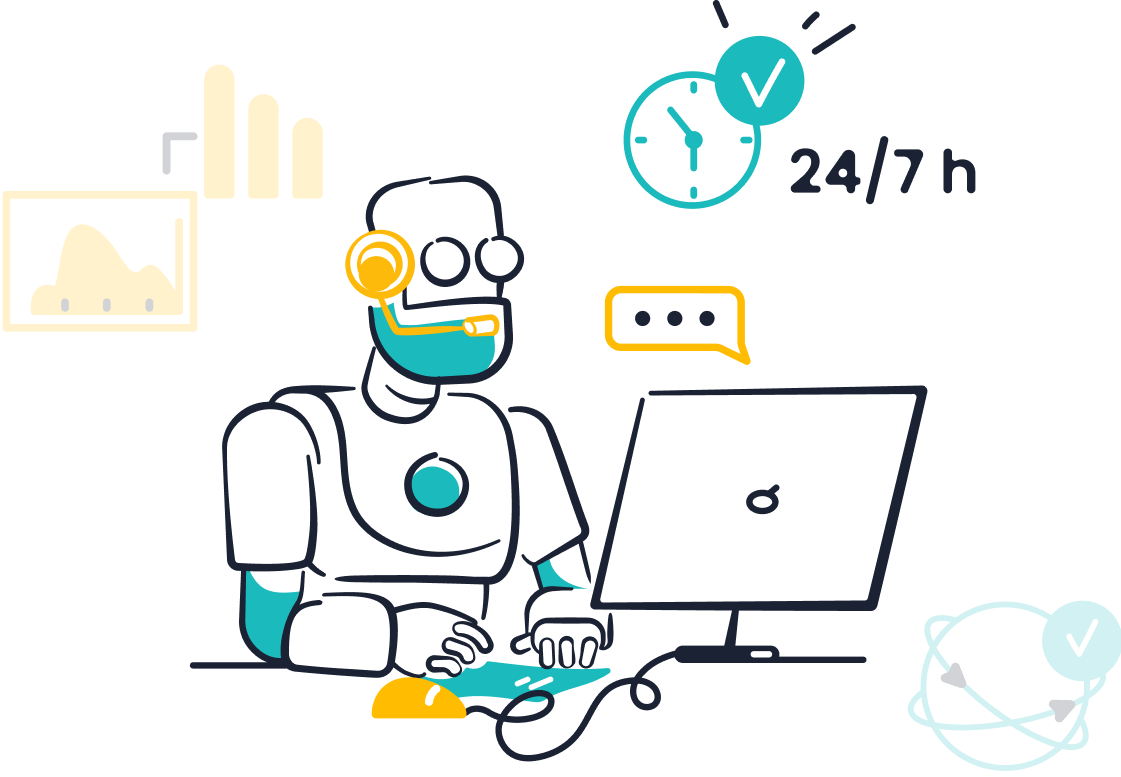
Chatbot technology is reshaping how businesses operate in 2025. With chatbot solutions for business answering 79% of routine customer queries and saving companies 30% on support costs, their impact is undeniable. You can now automate repetitive tasks, boost productivity, and focus on strategic goals. Emerging trends like conversational AI and hyper-personalized interactions are driving customer engagement to new heights. For example, 90% of businesses report faster complaint resolution through AI chatbots, while 55% see an increase in high-quality leads. Solutions like Sobot's customer support chatbot offer 24/7 assistance, multilingual capabilities, and seamless integration, helping businesses address customer queries efficiently. By embracing these advancements, you can stay competitive, enhance operational efficiency, and thrive in the future marketplace.
The Evolution of Chatbot Solutions for Business
From Rule-Based Systems to AI-Driven Chatbots
The journey of chatbots began with rule-based systems, which relied on predefined scripts to respond to user inputs. These systems, while functional, lacked flexibility and struggled with complex queries. Over time, advancements in artificial intelligence (AI) transformed these basic systems into sophisticated AI-driven chatbots.
- Early chatbots used finite state automata and Markov chains to process inputs.
- Predictive AI introduced decision-making capabilities, improving response accuracy.
- Generative AI marked a breakthrough, enabling chatbots to handle diverse business challenges.

Today, AI chatbots can understand natural language, making interactions more human-like. Businesses now use them for customer service, sales, and even marketing. For example, Sobot's AI chatbot leverages generative AI to provide 24/7 multilingual support, enhancing customer satisfaction and operational efficiency. This evolution reflects the growing importance of chatbots in the chatbot market.
The Role of NLP and Machine Learning in Chatbot Development
Natural Language Processing (NLP) and machine learning (ML) have revolutionized chatbot technology. NLP enables chatbots to interpret and respond to user queries accurately, while ML allows them to learn and improve over time. These technologies optimize customer interactions and enhance user experiences.
- Chatbots now achieve higher efficiency in resolving queries.
- Analytics derived from ML help businesses understand customer behavior.
- Metrics like task completion rates and user satisfaction guide chatbot improvements.
For instance, Sobot's AI chatbot uses NLP to deliver precise responses and ML to refine its performance. This integration ensures seamless interactions, making it a key player in the chatbot trend in 2025.
Key Milestones in the Growth of AI Chatbots
The growth of AI chatbots has been marked by significant milestones:
| Year | Milestone | Description |
|---|---|---|
| 2001 | SmarterChild | Early chatbot using NLP on MSN Messenger and AIM. |
| 2006 | Watson | IBM’s AI showcased on Jeopardy!, demonstrating advanced language skills. |
| 2014 | Alexa | Amazon’s assistant integrating NLP and ML for better interactions. |
| 2016 | Google Assistant | Virtual assistant utilizing advanced NLP for mobile devices. |
| 2020 | GPT-3 | OpenAI’s model generating human-like text for advanced chatbot applications. |
These milestones highlight the rapid advancements in AI chatbot development. Today, chatbots are integral to industries like e-commerce, healthcare, and education. They handle tasks ranging from customer support to personalized recommendations, showcasing their versatility.
Future Trends of AI Chatbots in 2025
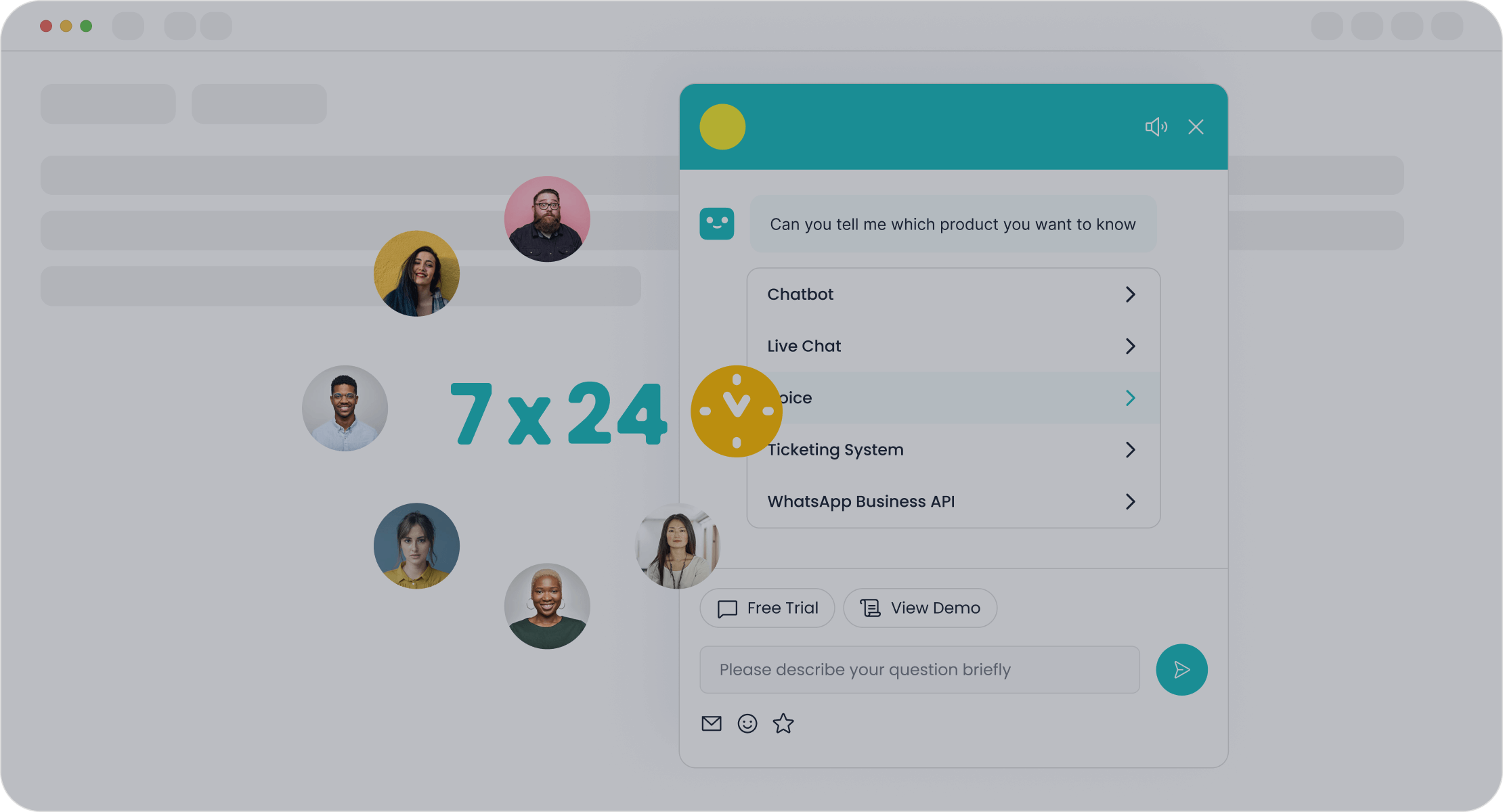
Hyper-Personalization for Enhanced Customer Engagement
Hyper-personalization is transforming how businesses interact with customers. By leveraging AI-driven personalization, chatbots can analyze user data to deliver tailored experiences. This trend focuses on understanding individual preferences, behaviors, and needs to create meaningful interactions. For instance, chatbots can recommend products based on browsing history or provide personalized responses to inquiries.
Businesses adopting hyper-personalization see remarkable results. Takko Fashion achieved an 82% increase in in-store purchases through WhatsApp engagement. Similarly, Volkswagen generated over 1,200 test drive sign-ups using click-to-chat ads. These examples highlight how enhanced personalization drives customer engagement and boosts conversions.
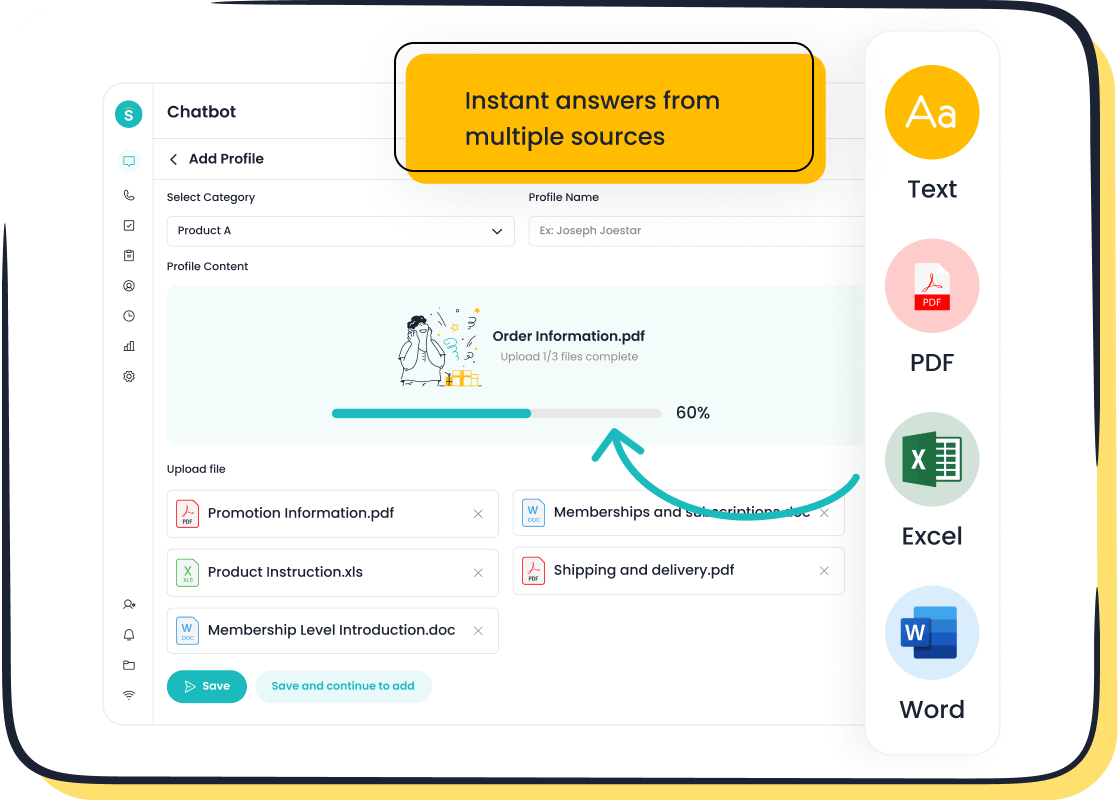
Sobot's AI chatbot exemplifies this trend. It uses advanced AI to analyze customer interactions and deliver personalized recommendations. Its multilingual capabilities ensure seamless communication, catering to diverse audiences. By integrating with the Internet of Things, Sobot's chatbot can further enhance personalization, offering real-time solutions based on connected device data.
Multimodal AI Chatbots for Seamless Interactions
Multimodal AI chatbots represent a significant leap in chatbot technology. These chatbots combine text, voice, and visual inputs to create seamless interactions. They adapt to user preferences, making communication more intuitive and efficient. For example, a customer can start a conversation via text and switch to voice for detailed explanations.
The future of multimodal chatbots lies in their ability to integrate with various platforms. Businesses can use them across websites, mobile apps, and social media channels. This omnichannel approach ensures consistent customer interaction, regardless of the medium. According to industry reports, 80% of users report positive experiences with chatbots, with 14% describing their interactions as "very positive."
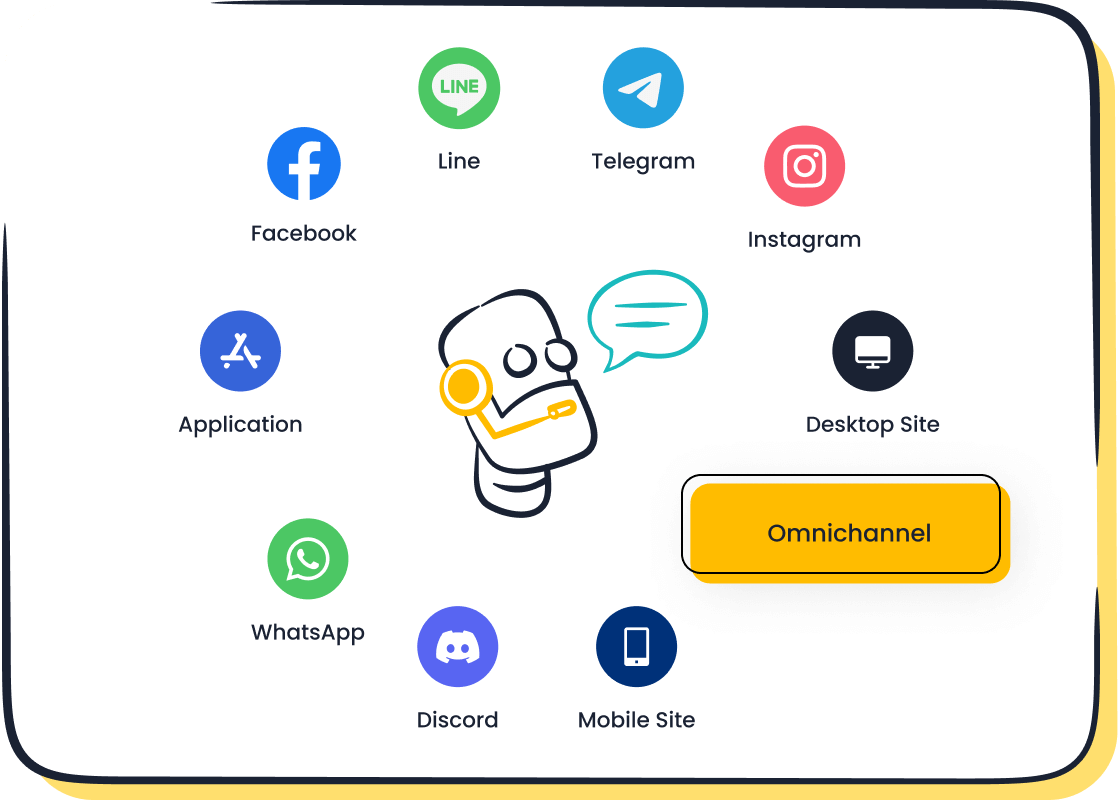
Sobot's chatbot leads the way in multimodal capabilities. It supports text and voice interactions, enabling businesses to provide 24/7 support. Its integration with platforms like WhatsApp and SMS ensures customers can connect through their preferred channels. This flexibility enhances user satisfaction and streamlines communication.
Autonomous AI Agents for Complex Business Tasks
Autonomous AI agents are redefining how businesses handle complex tasks. These agents go beyond basic query resolution, managing intricate processes with minimal human intervention. They excel in areas like prompt generation, iterative learning, and tool integration. For example, they can analyze marketing data, adjust ad spending, and track campaign performance in real time.
| Capability | Description | Example |
|---|---|---|
| Prompt Generation | Tailored prompts for LLMs using few-shot learning or chain-of-thought. | Specific prompts enhance relevance, e.g., detailing audience and product features. |
| Iterative Learning | Feedback loops for strategy adjustment based on performance outcomes. | Analyzing and iterating on prompts to improve engagement through A/B testing. |
| Tool Integration | Connecting various digital tools and APIs for enhanced functionality. | Integrating CRM with social media analytics for comprehensive customer insights. |
| Execution and Monitoring | Using data analytics to track progress against KPIs. | Adjusting ad spending in real-time based on marketing campaign performance metrics. |
| Memory and Adaptation | Storing past interactions for future personalization. | Remembering user preferences for tailored recommendations in subsequent tasks. |
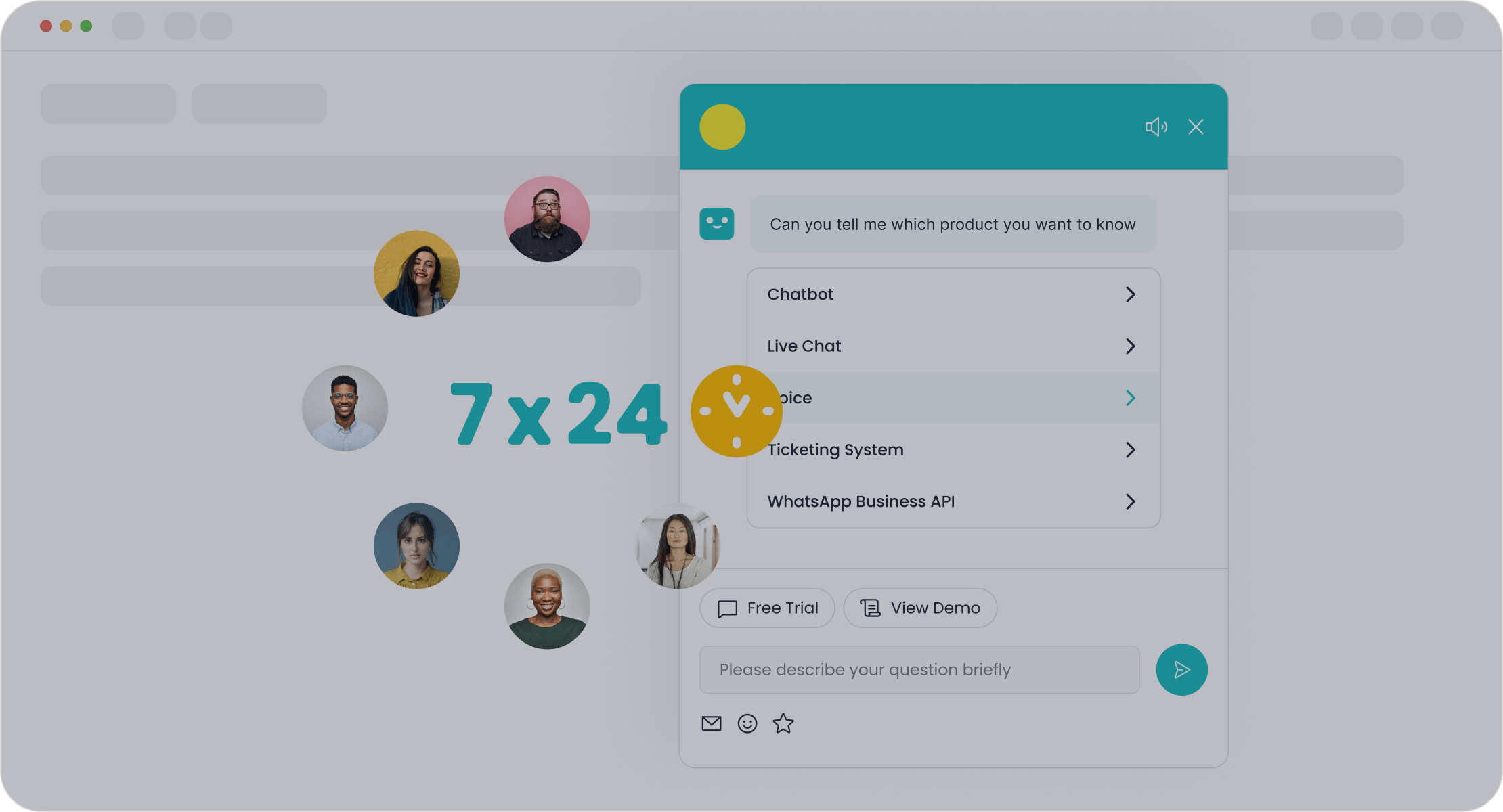
Sobot's AI chatbot incorporates these capabilities to optimize business operations. It automates repetitive tasks, freeing up resources for strategic initiatives. Its ability to learn and adapt ensures continuous improvement, making it an invaluable asset for businesses in 2025.
Emotionally Intelligent Chatbots for Empathetic Support
Emotionally intelligent chatbots are revolutionizing customer interactions by providing empathetic support. These chatbots use advanced AI to recognize emotions in text or voice and respond in a way that makes users feel understood. By analyzing tone, word choice, and context, they adapt their responses to match the emotional state of the user. This capability is especially valuable in industries like healthcare, mental health support, and customer service, where empathy plays a critical role.
For example, when a customer expresses frustration, an emotionally intelligent chatbot can acknowledge their feelings and offer a solution in a calming tone. This approach not only resolves issues but also builds trust and loyalty. Businesses adopting these chatbots report significant improvements in user engagement and satisfaction.
| Measurable Outcome | Description |
|---|---|
| Enhanced User Engagement | Users are spending more time interacting with chatbots, indicating higher interest and perceived value. |
| Increased Resolution Rates | Users report higher success in resolving issues with chatbot support, leading to goal attainment. |
| Positive User Feedback | Users express appreciation for the empathetic interactions, feeling understood and validated. |
Sobot's AI chatbot exemplifies this trend by integrating emotional intelligence into its design. It uses natural language processing to detect emotional cues and machine learning to refine its responses over time. This ensures that your customers receive empathetic and effective support, enhancing their overall experience. As emotionally intelligent chatbots become a key part of ai chatbot trends, they are setting new standards for customer interaction.
Multilingual Chatbots for Global Customer Reach
In an increasingly globalized world, multilingual chatbots are essential for businesses aiming to expand their reach. These chatbots can communicate in multiple languages, breaking down language barriers and ensuring that customers feel valued regardless of their location. Over 70% of global consumers prefer interacting with businesses in their native language, making multilingual capabilities a critical feature.
Multilingual chatbots are particularly effective in industries like travel, e-commerce, and education. For instance, an international travel company saw a 25% increase in online bookings after implementing a multilingual chatbot. Similarly, businesses using these chatbots report a 30% rise in conversion rates among international customers.
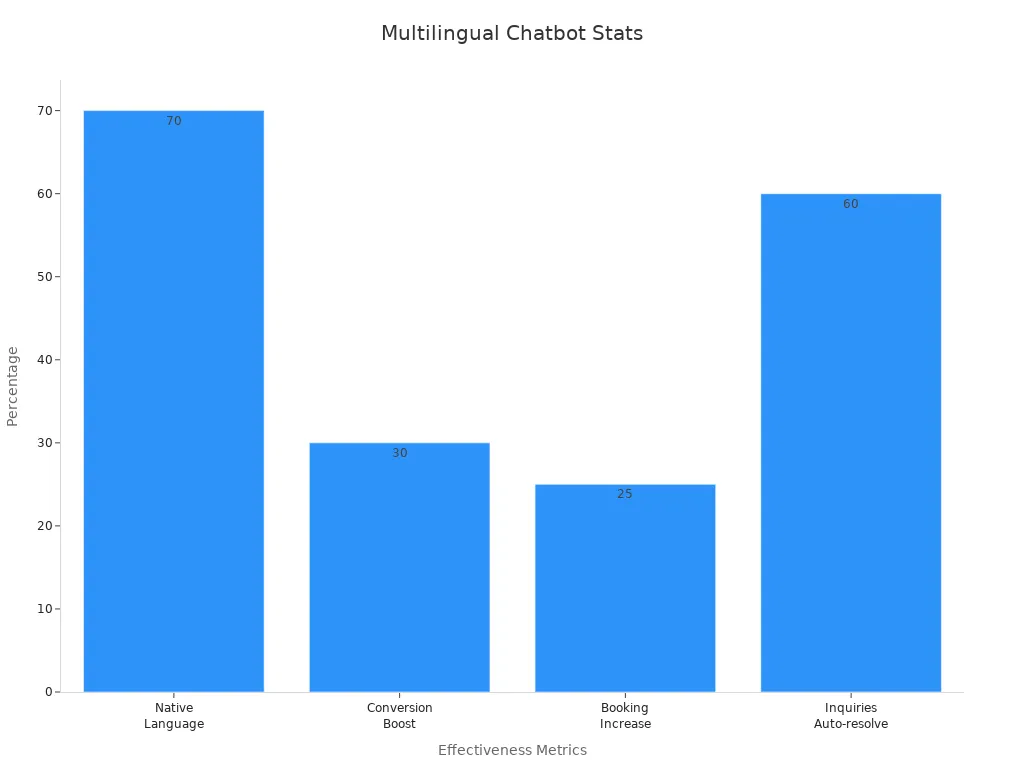

Sobot's AI chatbot offers robust multilingual support, enabling you to interact with customers in their preferred language across platforms like WhatsApp and SMS. This feature not only improves customer satisfaction but also reduces the need for additional human agents. With 24/7 availability and seamless integration, Sobot's chatbot ensures that your business can cater to a diverse audience effectively.
Benefits of Adopting Advanced Chatbot Solutions
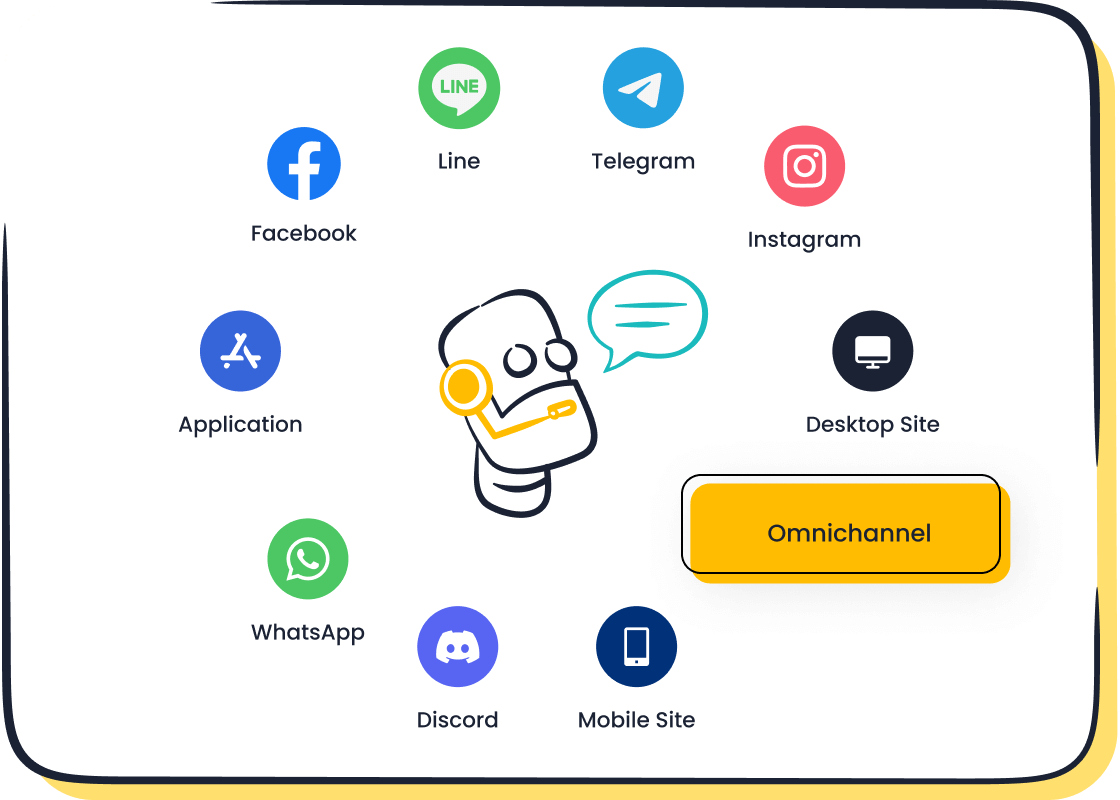
Enhancing Customer Experience with AI Chatbots
AI chatbots are transforming customer interaction by delivering faster, more personalized support. They can handle thousands of customer queries simultaneously, ensuring no one waits too long for assistance. Businesses that adopt conversational AI report a 20% increase in customer satisfaction. This improvement stems from chatbots' ability to provide accurate, real-time responses tailored to individual needs.
For example, Sobot's AI chatbot uses advanced AI and hyper-personalization to analyze customer behavior and offer relevant recommendations. Its multilingual capabilities ensure seamless communication with global audiences, enhancing customer engagement. By integrating with platforms like WhatsApp and SMS, it allows customers to connect through their preferred channels, creating a more satisfying experience.
Boosting Operational Efficiency and Reducing Costs
Chatbot technology significantly reduces operational costs by automating repetitive tasks and minimizing human error. AI chatbots save companies up to $8 billion annually by reducing the need for large customer service teams. They also operate 24/7, ensuring uninterrupted support without additional staffing costs.
Sobot's chatbot exemplifies this efficiency. It autonomously resolves routine queries, improving productivity by 70%. This allows your team to focus on complex issues, driving better outcomes. Additionally, its no-coding-required setup makes deployment quick and cost-effective, enabling businesses to reinvest savings into growth and innovation.
| Benefit | Evidence |
|---|---|
| Cost Savings | Chatbots can drive down client support costs by up to $80 billion across industries. |
| Customer Satisfaction | Businesses that adopt conversational AI see an average 20% increase in customer satisfaction. |
| Scalability | Chatbots can handle multiple conversations simultaneously, improving productivity significantly. |
Scalability to Meet Growing Business Demands
As businesses grow, so do their customer interaction needs. AI chatbots provide the scalability required to meet these demands without the high costs of hiring and training new agents. They can manage thousands of support requests during peak times, ensuring consistent service quality.
Sobot's chatbot is designed for scalability. It integrates seamlessly with various platforms, allowing you to expand your operations effortlessly. Its ability to handle multiple conversations simultaneously ensures your business can cater to increasing customer demands while maintaining high service standards. This scalability positions you to thrive in the future marketplace.
24/7 Availability for Uninterrupted Customer Support
In today’s fast-paced world, customers expect immediate responses, no matter the time of day. Businesses that fail to meet this expectation risk losing customers to competitors. This is where advanced chatbots become essential. They provide 24/7 availability, ensuring uninterrupted customer support and enhancing user satisfaction.
Imagine a customer needing assistance late at night. Without a chatbot, they might wait hours for a response. With a 24/7 chatbot, their query gets resolved instantly. Studies show that 64% of customers consider round-the-clock availability a key feature of customer service. This capability not only improves customer experience but also builds trust and loyalty.
Sobot’s AI chatbot exemplifies this advantage. It operates continuously, handling inquiries across multiple channels like WhatsApp and SMS. Whether it’s resolving routine questions or assisting with complex issues, Sobot’s chatbot ensures your customers always receive timely support. Its multilingual capabilities further enhance accessibility, making it ideal for businesses with a global audience.
Additionally, 24/7 chatbots reduce the workload on human agents. They handle repetitive tasks, allowing your team to focus on strategic goals. This improves productivity and reduces operational costs. For example, Sobot’s chatbot can autonomously resolve up to 70% of regular queries, saving businesses up to 50% on staffing expenses.
By adopting a 24/7 chatbot, you ensure your business remains accessible and efficient. This positions you to meet growing customer demands while staying ahead in a competitive market. With tools like Sobot’s AI chatbot, you can deliver uninterrupted support and elevate your customer service to new heights.
Sobot’s Chatbot Solutions for Business Success
Key Features of the Sobot AI Chatbot
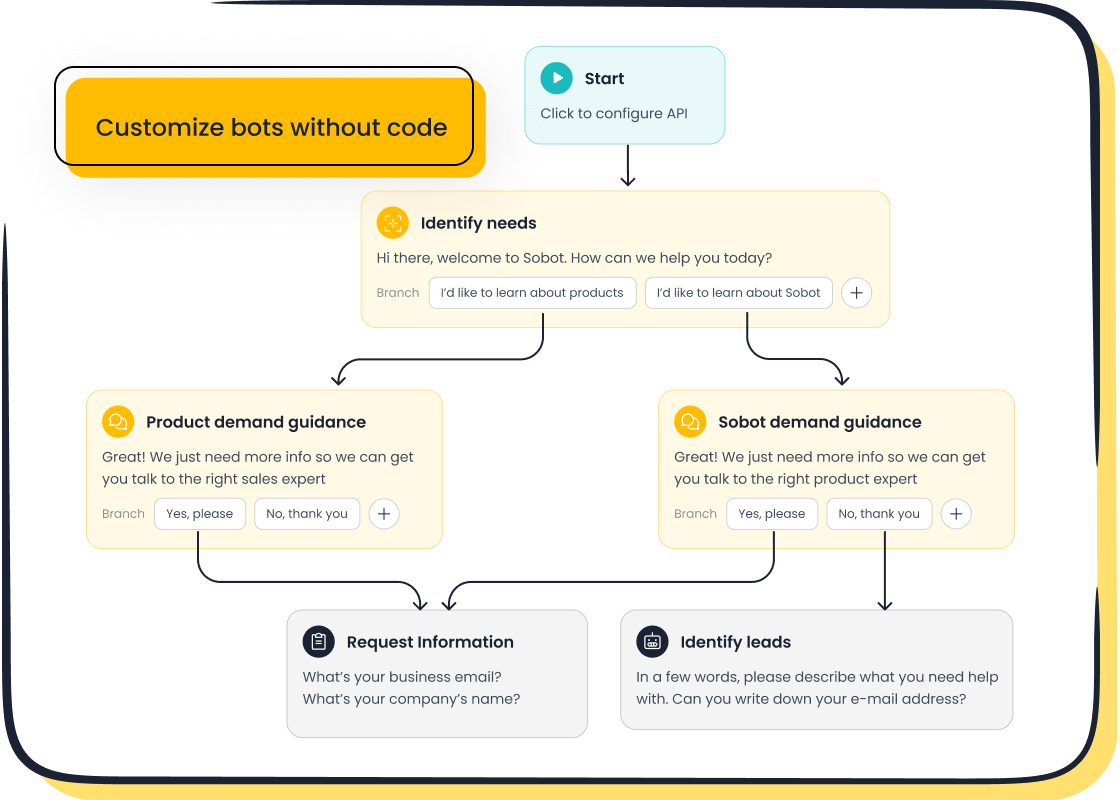
Sobot’s AI chatbot stands out with its advanced features designed to meet modern business needs. It offers omnichannel support, allowing you to interact with customers across platforms like WhatsApp, SMS, and social media. Its multilingual capabilities ensure seamless communication with global audiences, breaking language barriers effortlessly. The chatbot operates 24/7, providing uninterrupted support and reducing response times.
You can also benefit from its no-coding-required setup. The intuitive point-and-click interface makes it easy to design workflows without technical expertise. Additionally, the chatbot uses AI to build a knowledge base from various sources, such as PDFs and text snippets. This ensures accurate and instant responses to customer queries. Its reporting and optimization tools help you monitor performance and make data-driven improvements.
How Sobot Chatbot Enhances Customer Engagement
Sobot’s AI chatbot transforms customer engagement by delivering personalized and efficient interactions. It uses AI to analyze customer behavior and provide tailored recommendations. For example, it can suggest products based on browsing history or send proactive messages to re-engage users. This approach boosts conversions by 20% and increases customer satisfaction.
The chatbot also excels in resolving queries autonomously. It handles up to 70% of routine questions, freeing your team to focus on complex tasks. Businesses using Sobot’s chatbot report a 96% positive feedback rate and a 97% customer satisfaction score. These metrics highlight its effectiveness in creating meaningful customer experiences.
| Metric | Value |
|---|---|
| Reduction in inbound discussion | 20% |
| Positive feedback rate | 96% |
| Correct answers rate | 80% |
| Customer satisfaction (CSAT) | 97% |
| Problem resolution rate | 85% |
| Customer happiness rate | 99% |
| Sign-off rate | 35% increase |
| COD collection rate | 40% increase |
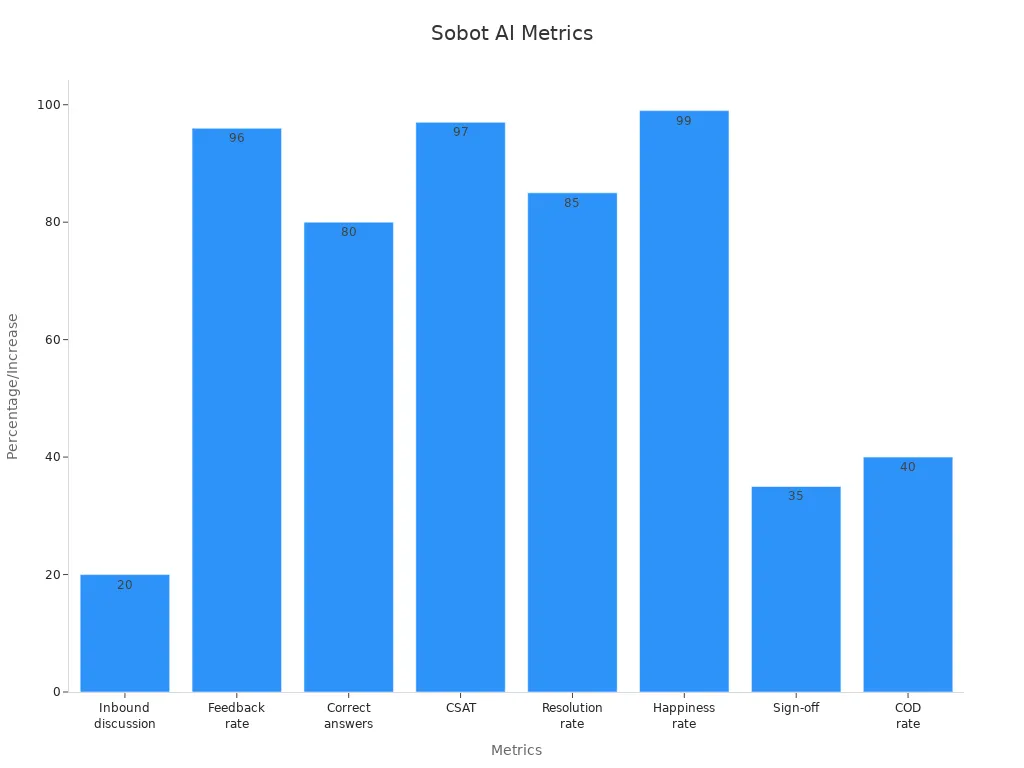
Real-World Applications of Sobot Chatbot in Industries
Sobot’s chatbot is versatile, serving industries like retail, e-commerce, and financial services. In retail, it enhances customer support by answering inquiries 24/7 and providing personalized product recommendations. For example, a Southeast Asian market entry achieved a 22.2% autonomous query resolution rate with a 97% CSAT score.
In financial services, the chatbot streamlines operations by automating repetitive tasks like account inquiries and payment reminders. This reduces operational costs and improves efficiency. E-commerce businesses use Sobot’s chatbot to reduce cart abandonment and boost sales through targeted promotions. Its ability to integrate with CRM systems ensures seamless data flow, enhancing overall customer experience.
Case Study: OPPO’s Success with Sobot Chatbot
OPPO, a global leader in smart devices, faced challenges in managing customer service during peak shopping periods. High inquiry volumes overwhelmed their support team, leading to long wait times and dissatisfied customers. You can imagine how frustrating it is for customers to wait for answers during busy times. OPPO needed a solution to handle repetitive queries efficiently while maintaining high service quality.
By implementing Sobot’s AI chatbot, OPPO transformed its customer service operations. The chatbot autonomously resolved 83% of routine inquiries, allowing human agents to focus on complex issues. This human-machine collaboration significantly improved response times and customer satisfaction. For example, OPPO achieved a 94% positive feedback rate, showcasing the chatbot’s ability to deliver accurate and timely support.
Did you know? OPPO also optimized its knowledge base with Sobot’s AI capabilities. This reduced maintenance efforts by 90%, saving valuable time and resources.
The integration of Sobot’s chatbot with OPPO’s global communication channels streamlined operations. Agents accessed customer data seamlessly, improving service consistency. As a result, OPPO saw a 57% increase in repurchase rates, proving the chatbot’s impact on customer loyalty.
| Key Metrics | Results Achieved |
|---|---|
| Chatbot Resolution Rate | 83% |
| Positive Feedback Rate | 94% |
| Increase in Repurchase Rate | 57% |
You can learn from OPPO’s success by adopting Sobot’s AI chatbot. Its multilingual support, 24/7 availability, and seamless integration make it a powerful tool for enhancing customer engagement. Whether you aim to reduce costs or improve efficiency, Sobot’s chatbot can help you achieve your goals. Explore more about Sobot’s solutions here.
Challenges and Considerations in Implementing AI Chatbot Trends
Addressing Ethical Concerns in AI Chatbot Deployment
Ethical concerns play a significant role in deploying chatbots. You must ensure that your chatbot operates fairly and avoids perpetuating biases. Algorithmic bias often arises from the data used to train AI systems. For instance, narrow datasets can amplify societal stereotypes, leading to unintended consequences in customer interactions. This is especially critical in industries like education, where biases can affect learning outcomes.
To address these concerns, you should focus on using diverse and representative datasets. Regular audits of your chatbot's performance can help identify and correct biases. Transparency is equally important. Informing users about potential biases in chatbot responses allows them to critically evaluate the information provided. By adopting these practices, you can build trust and ensure ethical business automation.
Ensuring Data Privacy and Security in Chatbot Interactions
Data privacy and security are essential when implementing chatbots. Customers trust you with their personal information, and safeguarding it should be a top priority. Data breaches can harm your reputation and lead to legal consequences. To mitigate these risks, you can adopt several strategies:
- Collect only the data you need to minimize exposure risks.
- Use strong encryption methods to protect sensitive information.
- Conduct regular audits to identify vulnerabilities.
- Train your employees on data protection best practices.
- Clearly communicate your data usage policies to customers.
For example, Sobot’s AI chatbot ensures compliance with data protection regulations like GDPR. It uses encryption and secure backups to protect customer data, making it a reliable choice for businesses prioritizing security.
Managing Implementation Costs and Resource Allocation
Implementing AI chatbots requires careful financial planning. You need to evaluate the costs of setup, maintenance, and updates. A thorough cost-benefit analysis helps you determine whether a custom or off-the-shelf solution aligns with your goals. Custom solutions may offer long-term value but require higher initial investments. On the other hand, off-the-shelf options are more affordable but might lack specific functionalities.
To calculate ROI, consider metrics like cost savings from reduced human agent dependency and improved customer satisfaction. For instance, Sobot’s chatbot reduces operational costs by automating repetitive tasks, saving up to 50% on staffing expenses. This efficiency allows you to allocate resources to other strategic initiatives, ensuring sustainable growth.
| Factor | Description |
|---|---|
| AI Complexity | Costs increase with system sophistication. |
| Ongoing Maintenance | Regular updates are essential for efficiency and compliance. |
| Industry-Specific Needs | Compliance requirements can raise costs. |
| Custom vs. Off-the-Shelf | Custom solutions offer flexibility but require higher investments. |
By managing these factors effectively, you can maximize the benefits of chatbot implementation while staying within budget.
Balancing Automation with Human Touch in Customer Service
Finding the right balance between automation and human interaction is essential for delivering exceptional customer service. While chatbots excel at handling repetitive tasks, human agents bring empathy and creativity to complex situations. Combining these strengths creates a seamless experience for your customers.
Many businesses have successfully implemented this approach. Starbucks uses an AI-powered chatbot to process orders efficiently. However, it transfers complex issues to human baristas, ensuring personalized service. Similarly, Bank of America’s Erica AI assistant manages basic inquiries and transactions. For financial advice or dispute resolution, live agents step in to provide expert guidance. Sephora blends chatbot recommendations with human beauty advisors, offering tailored assistance to customers.
“A blended AI approach where automation can help the human be more human is most ideal,” says Graeme Provan. This strategy allows chatbots to handle routine tasks, freeing human agents to focus on emotional intelligence and problem-solving.
To achieve this balance, you can follow these steps:
- Use chatbots for routine inquiries and ensure smooth transitions to human agents for complex issues.
- Combine AI analytics with human intuition to personalize customer interactions.
- Train your team to collaborate with AI, enhancing efficiency and customer satisfaction.
Sobot’s AI chatbot exemplifies this synergy. It autonomously resolves up to 70% of routine queries, allowing your team to focus on strategic goals. Its seamless integration with platforms like WhatsApp ensures smooth handoffs to human agents when needed. This approach not only improves efficiency but also enhances the customer experience.
By blending automation with human touch, you can build trust, improve loyalty, and create meaningful connections with your customers. This strategy ensures your business stays competitive in an increasingly automated world.
Actionable Insights for Businesses Adopting Chatbot Solutions
Evaluating and Selecting the Right Chatbot Solution
Choosing the right chatbot solution for your business requires careful evaluation of its capabilities and alignment with your goals. Start by assessing key metrics that measure chatbot performance. For example, bot accuracy rate evaluates how well the chatbot responds to customer queries, while tailored recommendations show its ability to provide personalized suggestions. Conversational efficiency and goal completion rate help you understand how effectively the chatbot engages users and assists them in achieving their objectives.
| Metric | Description |
|---|---|
| Bot Accuracy Rate | Measures how accurately the chatbot responds to user queries. |
| Tailored Recommendations | Evaluates the chatbot's ability to provide personalized suggestions based on user preferences. |
| Conversational Efficiency | Assesses how effectively the chatbot engages in conversations with users. |
| Goal Completion Rate | Indicates the percentage of users achieving their intended outcomes through the chatbot. |
Additionally, performance alignment and user satisfaction are critical metrics. These ensure the chatbot meets customer expectations and business objectives. Engagement rate and human takeover rate provide insights into how actively users interact with the chatbot and when human intervention is necessary. By analyzing these metrics, you can select a chatbot solution that enhances customer interaction and drives operational efficiency.
Sobot’s AI chatbot stands out as a reliable choice. Its multilingual capabilities, 24/7 availability, and seamless integration with platforms like WhatsApp make it ideal for businesses aiming to improve customer engagement globally. Its ability to autonomously resolve customer queries ensures high accuracy and efficiency, reducing the need for human intervention.
Best Practices for Integrating Chatbots into Business Operations
Effective chatbot integration requires a strategic approach to maximize its benefits. Begin by identifying areas where chatbots can add value, such as handling repetitive customer queries or providing personalized recommendations. Regular monitoring and reporting ensure the chatbot performs optimally. Metrics like time to resolution and ticket reduction rate highlight its efficiency in resolving issues and reducing the workload on human agents.
| Metric | Description |
|---|---|
| Time to Resolution | The average time taken to resolve user queries. Faster resolution times indicate efficient issue handling. |
| Retention Rate | Measures how many users return to interact with the chatbot over time. High retention rates indicate users find ongoing value in interacting with the chatbot. |
| Conversion Rate | This metric measures the chatbot's effectiveness in guiding users toward specific actions, such as making a purchase, signing up for a newsletter, or filling out a form. |
| Ticket Reduction Rate | The percentage reduction in customer support tickets due to chatbot interactions measures the chatbot’s effectiveness in handling issues that normally need human agent intervention. |
A/B testing helps refine chatbot responses, while customer feedback integration ensures the chatbot evolves based on user needs. Personalization plays a vital role in enhancing customer satisfaction. For example, Sobot’s chatbot uses hyper-personalization to analyze customer behavior and deliver tailored recommendations. Compliance and security measures protect customer data, building trust and loyalty.
Sobot’s chatbot simplifies integration with its no-coding-required setup. Its intuitive interface allows you to design workflows effortlessly. By leveraging its advanced features, such as omnichannel support and AI-driven insights, you can streamline operations and improve customer interaction across multiple platforms.
Training Teams to Collaborate with AI Chatbots
Training your team to work effectively with AI chatbots ensures seamless collaboration and maximizes their potential. Begin by focusing on practical applications of AI skills. Continuous monitoring and feedback help refine training programs, ensuring your team adapts to evolving chatbot capabilities. Regular assessments linked to performance indicators track the impact of training on operational efficiency.
- Continuous monitoring and feedback improve training outcomes.
- Practical applications of AI skills enhance team collaboration.
- Regular assessments linked to performance indicators measure training effectiveness.
For example, Sobot’s chatbot assists agents by providing real-time insights and summaries, enabling them to handle complex queries efficiently. Training your team to use these features ensures they can leverage the chatbot’s capabilities to enhance customer engagement. By fostering collaboration between human agents and chatbots, you create a balanced approach that combines automation with a human touch.
Monitoring and Optimizing Chatbot Performance for Success
Monitoring and optimizing chatbot performance ensures that your business achieves the best results from its AI chatbots. By tracking key performance indicators (KPIs), you can identify areas for improvement and enhance the overall customer experience. Regular evaluation helps you maintain efficiency and adapt to changing customer needs.
Key Performance Indicators to Track
To measure the success of your chatbot, focus on these essential KPIs:
| Performance Indicator | Description |
|---|---|
| User Engagement | Measures how actively users interact with the chatbot. |
| Response Time | Tracks the average time taken by the chatbot to respond to user queries. |
| Fallback Rate | Indicates how often the chatbot fails to understand user queries. |
| Retention Rate | Reflects the percentage of users who return to use the chatbot again. |
| Conversion Rate | Measures the effectiveness of the chatbot in converting interactions into desired actions. |
These metrics provide a clear picture of how well your chatbot performs. For example, a low fallback rate indicates that your chatbot understands user queries effectively, while a high retention rate shows long-term customer satisfaction.
Additional Metrics for Optimization
You should also monitor the following metrics to ensure your chatbot delivers value:
- Goal Completion Rate (GCR): Tracks how effectively the chatbot resolves user queries.
- Customer Satisfaction Scores (CSAT): Measures user happiness with the chatbot's responses.
- Retention Rate: Indicates customer loyalty and satisfaction over time.
By analyzing these metrics, you can identify trends and make data-driven decisions to improve your chatbot's performance.
Strategies for Optimization
Optimizing your chatbot involves more than just tracking metrics. You need actionable strategies to enhance its capabilities. Here are some effective methods:
- Regular Updates: Keep your chatbot's knowledge base current. For instance, Sobot's AI chatbot allows you to update its knowledge base using PDFs, articles, and text snippets. This ensures accurate and relevant responses.
- A/B Testing: Experiment with different chatbot responses to find the most effective ones. Test variations in tone, language, and structure to improve user engagement.
- Customer Feedback Integration: Use feedback to refine your chatbot's responses. For example, if users frequently express dissatisfaction with a specific answer, adjust the chatbot's programming to address the issue.
- Training with Real Data: Train your chatbot using real customer interactions. This helps it learn and adapt to common queries, improving its accuracy over time.
Real-World Example: Sobot's AI Chatbot
Sobot's AI chatbot exemplifies how monitoring and optimization drive success. It uses advanced analytics to track metrics like response time and resolution rate. These insights help businesses identify gaps and improve performance. For example, Sobot's chatbot autonomously resolves up to 70% of routine queries, reducing operational costs by 50%. Its multilingual capabilities and 24/7 availability ensure seamless customer interactions, making it a valuable tool for businesses aiming to stay competitive in the future.
Why Monitoring Matters
Monitoring your chatbot's performance is not just about fixing problems. It helps you anticipate future challenges and adapt proactively. For instance, if your chatbot's response time increases, it may indicate a need for system upgrades or additional resources. By staying ahead of potential issues, you ensure that your chatbot continues to meet customer expectations.
Incorporating these strategies into your operations ensures that your chatbot remains a powerful asset. With tools like Sobot's AI chatbot, you can optimize performance, enhance customer satisfaction, and achieve long-term success.
Adopting emerging chatbot solutions in 2025 is essential for businesses aiming to thrive in a competitive market. Chatbots enhance customer experience, optimize operations, and generate actionable insights. For example, conversational analytics map user interactions, helping you understand customer journeys and adapt to evolving needs. Autonomous chatbots also handle complex tasks, allowing your team to focus on strategic goals.
| Metric/Insight | Description |
|---|---|
| Customer Experience | Chatbots enhance customer experience, which is crucial for gaining a competitive edge in a crowded market. |
| Operational Efficiency | Autonomous chatbots optimize business operations by handling routine tasks, allowing teams to focus on strategic objectives. |
| Insight Generation | Conversational analytics help businesses understand customer journeys by mapping user interactions and identifying patterns. |
| ROI Tracking | Companies can measure the return on investment for chatbots by comparing generated leads and costs, ensuring financial viability. |
Sobot’s AI chatbot exemplifies these benefits. It provides 24/7 multilingual support, automates routine queries, and delivers personalized recommendations. By leveraging Sobot’s solutions, you can enhance customer engagement and operational efficiency while staying ahead of industry trends. As chatbots evolve with emotional intelligence and advanced analytics, they will remain indispensable tools for businesses in 2025.
Embrace AI chatbot trends today to secure your competitive edge tomorrow.
FAQ
What is the main purpose of chatbot solutions for businesses in 2025?
Chatbot solutions for business aim to automate customer interactions, enhance engagement, and improve operational efficiency. For example, Sobot's AI chatbot resolves up to 70% of routine queries autonomously, saving businesses up to 50% on staffing costs while boosting customer satisfaction.
How do AI chatbots improve customer engagement?
AI chatbots analyze customer behavior to deliver personalized recommendations. For instance, Sobot's chatbot uses hyper-personalization to suggest products based on browsing history. This approach increases conversions by 20% and ensures customers feel valued during every interaction.
Can chatbots handle multilingual customer support?
Yes, modern chatbots, like Sobot's AI chatbot, offer multilingual capabilities. They communicate in multiple languages, ensuring global customer reach. Over 70% of consumers prefer interacting in their native language, making this feature essential for businesses expanding internationally.
Are chatbots secure for handling sensitive customer data?
AI chatbots prioritize data security. Sobot's chatbot complies with regulations like GDPR, using encryption and secure backups to protect customer information. Regular audits and updates further enhance security, ensuring your customers' data remains safe.
How can businesses measure the success of their chatbot solutions?
You can track metrics like response time, resolution rate, and customer satisfaction scores. For example, Sobot's chatbot achieves a 97% CSAT score and resolves 85% of issues autonomously, showcasing its effectiveness in improving customer experience and operational efficiency.
See Also
10 Leading Chatbots for Websites This Year 2024
10 Websites Leveraging Chatbots Effectively in 2024
Simple Steps to Integrate Chatbots on Your Website